Juice boxes are a staple in the diets of children around the world, offering a convenient and often nutritious beverage option. They come in a variety of flavors, brands, and nutritional compositions, catering to a wide range of tastes and dietary needs. Parents and guardians tend to reach for juice boxes as a quick beverage choice for school lunches, picnics, or on-the-go snacks due to their portability and ease of use.
Despite their popularity, the discussion around juice boxes for children is multifaceted. Nutritionists emphasize the importance of moderating juice intake to prevent excessive sugar consumption, while environmentalists point to the impact of packaging waste. As such, many companies have worked to create juice boxes that attempt to balance taste, convenience, nutritional value, and eco-friendliness.
As the market for children’s beverages grows, so does the innovation in juice box production. Advances in packaging technology have led to the development of more sustainable options, and recipe changes have reduced sugar levels without compromising on flavor. This has made juice boxes a continuous subject of interest for those invested in child nutrition and environmental sustainability.
Reader's Roadmap
Understanding Juice Boxes for Kids
Juice boxes for kids are a popular beverage choice for their convenience and variety. They play a significant role in complementing a child’s snack time or lunch with a portion of fruit nutrition.
Definition and Importance of Juice Boxes
Juice boxes are small cartons or plastic pouches containing juice, which come with a straw or a spout for easy drinking. T hey are especially designed for kids, providing a convenient and often spill-proof way to consume juice. Juice boxes can be part of a balanced diet when chosen correctly, as they can offer vitamins and hydration. 100% juice boxes are significant because they supply children with one or more servings of fruit without added sugars, while 0% juice boxes contain fruit flavors but no actual juice.
Different Types of Juice Boxes
There are various types of juice boxes catering to different needs and preferences:
- 100% Juice Boxes: They contain only juice and sometimes added vitamin C or calcium. These are considered healthy options as they do not have added sugars or artificial flavors.
100% Juice 0% Juice No added sugars Often contain added sugars May have added vitamins Usually no added nutritional value More expensive Less expensive - Organic Juice Boxes: These are made from fruit grown without synthetic pesticides or fertilizers. They are a preferred option for parents looking for organic product options for their children.
- Flavored Juice Boxes: Often these contain little to no actual juice and are instead flavored water with sweeteners and added nutrients. They are less healthy due to their sugar content and lack of natural fruit nutrients.
- Fortified Juice Boxes: Some juice boxes come fortified with additional nutrients like omega-3s, fiber, or probiotics. These options can add additional health benefits beyond regular juice.
Parents should consider the nutritional content and ingredients to make informed choices about which juice boxes are right for their kids. It’s also important to moderate intake due to sugar content, even in 100% juice options.
Nutritional Content and Ingredients
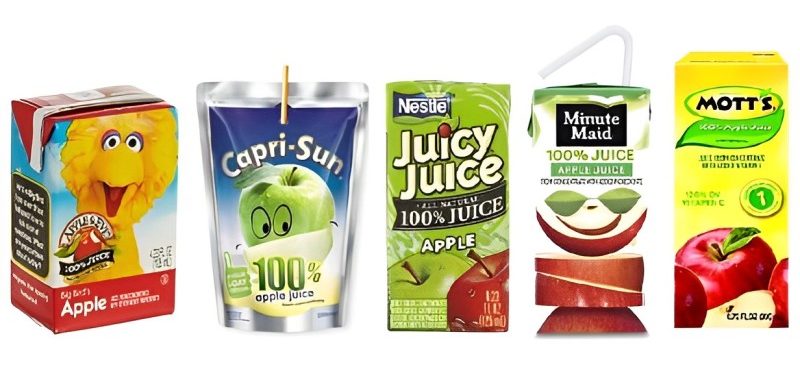
When considering juice boxes for children, it is essential to understand the nutritional content and specific ingredients they contain. Parents and caregivers should focus on the amounts of sugars, vitamins, and additives present.
Reading the Label for Nutrition Information
To gauge the nutritional value of a juice box, one should closely examine the label. The nutrition facts panel is key to understanding what a child consumes. It lists:
- Total calories
- Sugars: Watch for total sugars, including added sugars, which should be limited in a child’s diet.
- Vitamins: Certain juice boxes are fortified, often highlighting Vitamin C (ascorbic acid) and other vitamins and minerals like potassium.
- Percentage Daily Values (%DV), which indicate how much a nutrient in a serving of food contributes to a daily diet.
Table 1: Nutritional Information (Example)
| Nutrient | Amount per Serving | % Daily Value |
|---|---|---|
| Calories | 60 | 3% |
| Total Sugars | 13g | Not Listed |
| Added Sugars | 10g | 20% |
| Vitamin C (Ascorbic Acid) | 30mg | 33% |
| Potassium | 250mg | 5% |
Examine this table to understand how each nutrient fits into the daily dietary needs of a child.
Significance of Ingredients in Juice Boxes
Ingredients play a crucial role in the health implications of juice boxes. A typical juice box may contain:
- Fruit juice concentrate: The primary ingredient, often from one or more fruit types.
- Water: Added to dilute the concentrate to a drinkable consistency.
- Added sugars: Increases palatability but should be consumed in moderation.
- Additives: Including flavors, colors, or preservatives to enhance taste and shelf-life.
- Vitamins and minerals: Sometimes juice boxes are fortified with extra nutrients, such as Vitamin C and potassium.
Many parents opt for juice boxes that list fruit juice as the first ingredient and have no added sugars or artificial additives. Juice boxes can be a good source of vitamins and minerals, yet one must be aware of the potential for high sugar content.
Health and Safety Considerations
When selecting juice boxes for children, it is crucial to consider the nutritional content and the recommendations by health authorities to ensure that the choices made contribute positively to a child’s diet and well-being.
American Academy of Pediatrics’ Recommendations
The American Academy of Pediatrics (AAP) advises that children under the age of 1 should not consume juice. For those aged 1-3, their daily intake should be limited to 4 ounces. Youngsters between 4 and 6 years old should have no more than 4-6 ounces, and those aged 7-18 should limit their consumption to 8 ounces or 1 cup of the recommended 2 to 2.5 cups of fruit servings per day. The AAP emphasizes that intake of fresh fruit over juice is preferable due to fiber content and reduced sugar levels.
- Age Group: <1 year | Recommendation: No Juice
- Age Group: 1-3 years | Daily Limit: 4 oz
- Age Group: 4-6 years | Daily Limit: 4-6 oz
- Age Group: 7-18 years | Daily Limit: 8 oz
Understanding Sugar and Additives
Sugar is a significant factor to consider, as many juice boxes contain high levels of added sugars which can contribute to unhealthy weight gain and dental problems. When examining a juice box, check the label for the presence of added sweeteners like high fructose corn syrup or cane sugar. Ingredients such as natural flavors and preservatives may be included to enhance taste and longevity but can have implications for health if consumed in excess.
- Check List for Juice Box Labels:
- Added Sugars: keep minimal for health.
- Preservatives: recognize and understand them.
- Natural Flavors: ensure they are truly natural.
- Sweeteners: avoid artificial types for children’s health.
Juice boxes should also be assessed for their vitamins and minerals content. Nutrients like Vitamin C and calcium are often added to improve nutritional value. Parents should ensure that the daily value of these nutrients does not exceed the recommended daily intake for their child’s age and dietary needs.
Varieties and Flavors
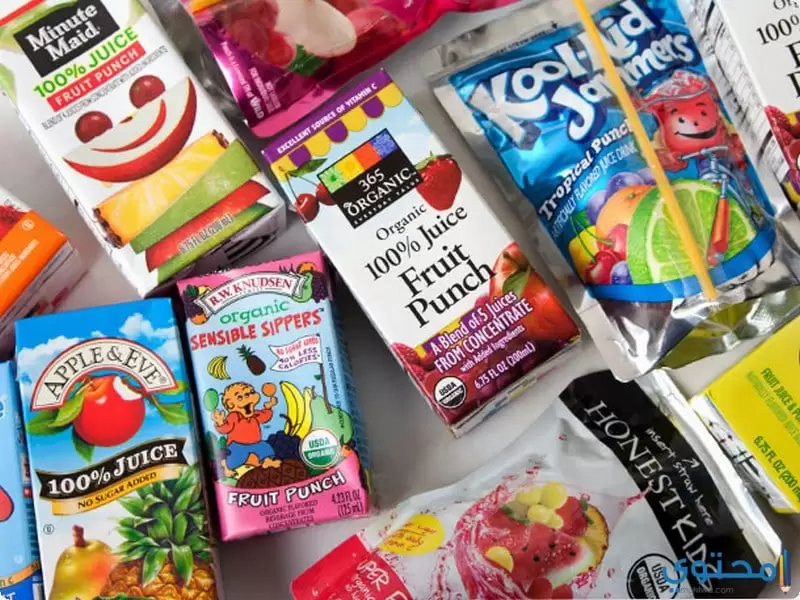
Juice boxes for kids come in a plethora of flavors, ranging from classic options like apple and orange juice to more adventurous mixes like tropical and fruit punch. Organic and natural choices are also available for parents seeking options without artificial additives.
Popular Juice Box Flavors
- Apple Juice: Often made from concentrate, this classic flavor is a staple in lunchboxes.
- Orange Juice: Sought for its vitamin C content, it remains a favorite among children.
- Fruit Juice Varieties: Brands like Capri Sun and Juicy Juice offer a range of mixed fruit flavors.
- Tropical Punch: A blend of tropical flavors that typically includes pineapple, mango, and other exotic fruits.
- Fruit Punch: Combining flavors like apple, cherry, and grape, this mix is a kid-approved favorite.
Organic and Natural Options
- Organic Apple Juice: Made from organically-grown apples without synthetic pesticides or fertilizers.
- Organic White Grape Juice: A sweet and mild option, often used as a base in mixed juices.
- Organic Strawberry Juice: Less common but offers a rich, sweet taste.
- Organic Cranberry Juice: Known for its tangy flavor and potential health benefits.
- Organic Natural Flavors: These juices use natural extracts and essences from organic fruits to enhance taste.
Packaging and Convenience
Juice boxes for kids are designed to offer both practicality and user-friendly features that cater to the needs of children and parents alike. They are also subject to considerations about their environmental footprint.
Child-Friendly Packaging Features
Juice boxes come equipped with various child-friendly attributes. The Capri Sun Fruit Punch, for instance, features an easy-to-use sip pouch with a straw attached, making it convenient for small hands to handle and drink without assistance. Most juice boxes, including this popular brand, use bright labels and designs that not only make them visually appealing to children but also help in conveying the flavor and brand identity. The size of these packages is typically small, usually around 6 to 8 ounces, which aligns with the recommended serving size for children. This dimension makes them a perfect fit for a standard lunchbox and can create a sense of joy and anticipation for their mealtime.
- Design: User-friendly, visual appeal
- Size: ~6-8 ounces, lunchbox-friendly
- Convenience: Features like attached straw increase ease of use for children
Environmental Impact of Juice Box Packages
The manufacturing of juice boxes takes into account their environmental impact. A juice box’s packaging consists of laminated layers including paper, plastic, and aluminum, which can be a challenge to recycle. Companies are steadily moving towards more sustainable practices, such as using materials from renewable sources and improving the recyclability of their packages. They also provide clear instructions on the label to educate consumers on how to properly dispose of the packaging. It’s crucial for manufacturers to balance the convenience of the product’s packaging with its environmental responsibilities to mitigate its ecological footprint.
- Materials: Paper, plastic, aluminum
- Sustainability: Shift towards renewable sources, emphasis on recyclability
- Consumer Education: Instructions on packaging to guide proper disposal
Hydration and Dietary Role
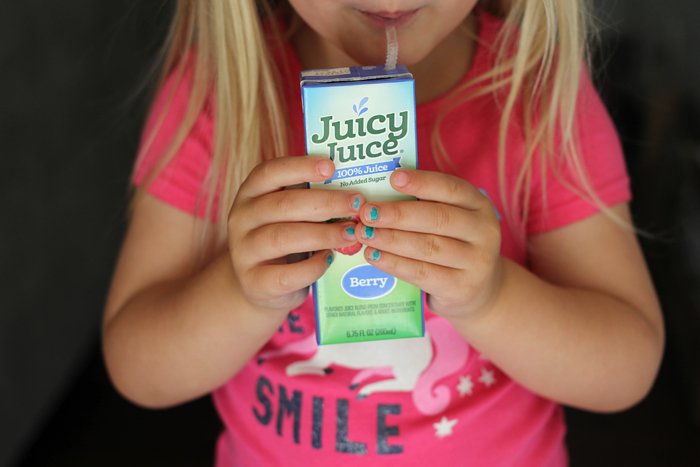
Juice boxes offer a convenient and appealing way for children to consume liquids and contribute to their daily hydration and nutrient intake.
Juice Boxes as Hydration Tools
Hydration is critical for children’s health, and juice boxes can serve as an effective means to encourage fluid intake. Water is the best option for hydration, but sometimes children may resist drinking plain water. In such cases, juice boxes that contain fruit juice or flavored water can be more enticing due to their taste. It’s important that these juice boxes are low in added sugars and consumed in moderation.
- Fruit Juice Boxes: Contain some natural sugars and should be limited to one serving per day.
- Flavored Water Boxes: A better choice with less sugar, but should still be monitored.
Incorporating Juice Boxes in a Balanced Diet
A balanced diet for children involves a variety of nutrients and the appropriate number of calories for their age and activity level. Juice boxes can play a role in this balance but should complement, not replace, whole fruits and other essential food groups.
- Milk: A valuable source of calcium and vitamin D, important for bone development.
- Fruit Juice: Provides vitamins but lacks the fiber found in whole fruits.
- Moderation: Key to incorporating juice boxes without exceeding recommended daily sugar intake.
By selecting juice boxes wisely and considering their place within the broader context of a child’s diet, they can contribute to both hydration and nutrition.
Consumer Guidance
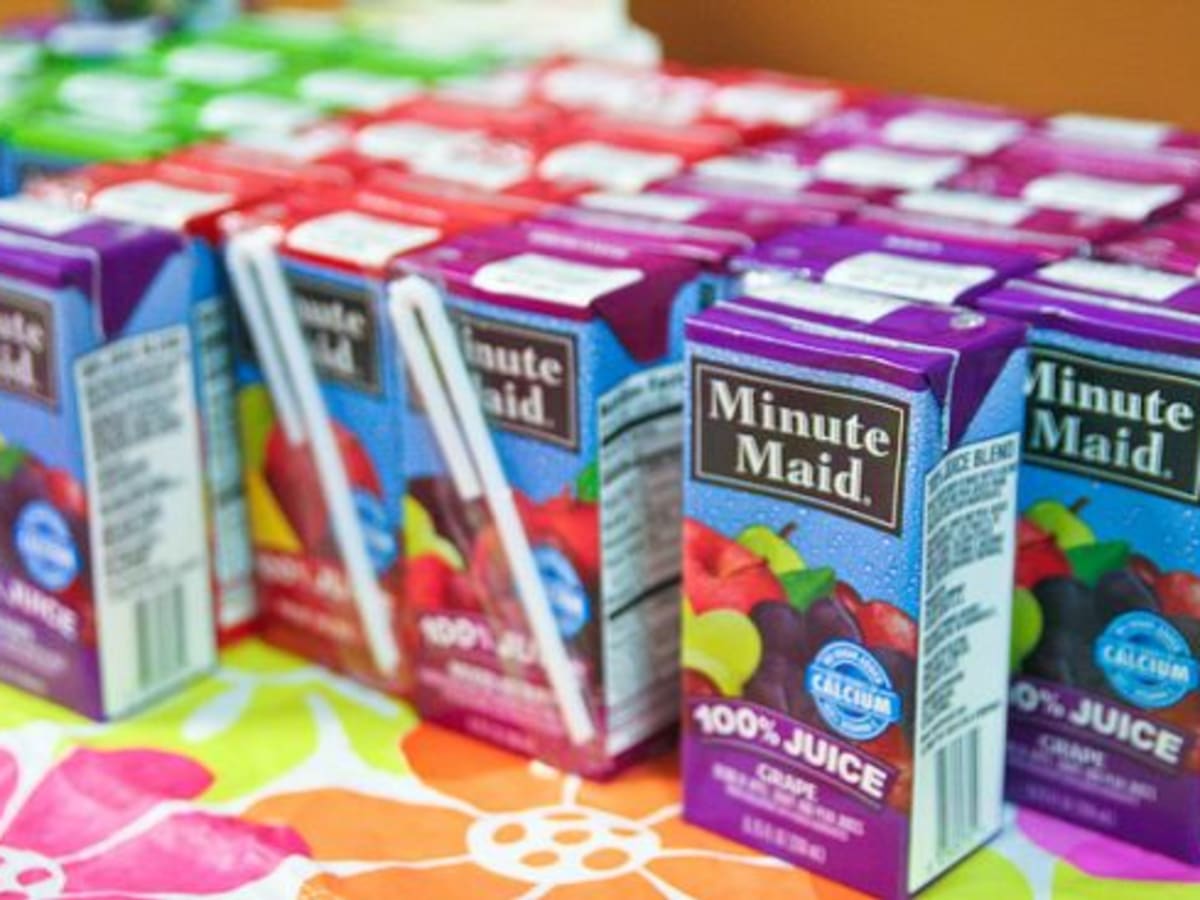
When selecting juice boxes for children, it is important to consider nutritional content and authenticity of labeling. Parents should seek out products that are transparent and align with nutritional guidelines.
How to Choose the Right Juice Box
Parents are encouraged to examine the product information for sugar content, juice percentage, and the presence of added vitamins or minerals. They should prioritize juice boxes that contain:
- 100% fruit juice: Indicates no added sugars or artificial flavors.
- Low sugar: Preferably naturally occurring sugars from fruits.
- No artificial colors or flavors: To avoid unnecessary additives.
A registered dietitian can provide guidance on what to look for in a juice box, ensuring that children consume healthier options. Additionally, independent reviews can offer insights into taste preferences and quality.
Interpreting Marketing and Labels
Marketing claims on juice boxes can sometimes be misleading. It is vital to understand common terms:
- “Made with real fruit”: May imply the product contains fruit, but does not guarantee 100% fruit juice.
- “All-natural”: Does not necessarily mean healthy, as sugar content may still be high.
Reading the label carefully is crucial. Here are key label elements to focus on:
- Ingredients List: Ingredients are listed in order of quantity, from highest to lowest.
- Nutrition Facts: Provides information on calories, sugars, and essential nutrients.
Parents should be skeptical of claims that seem too good to be true and look for labels that contain endorsements or certifications from reputable health organizations.
Purchasing and Storage
When selecting juice boxes for kids, buyers should consider the financial benefits of bulk purchases and understand the importance of proper storage to maintain freshness and longevity.
Buying Juice Boxes in Bulk
Consumers often find better value in buying juice boxes in larger quantities. Retailers frequently offer discounts on bulk purchases, which can lead to significant savings over time. Parents or guardians looking to purchase juice boxes should take into account their household’s consumption rate and available storage space before investing in bulk. Here’s an example of how bulk buying could be advantageous:
- Featured Product: JuicyKids 100% Apple Juice, 6 fl oz boxes
- Amount: 40-pack
- Price per Box:
- Single pack (10 boxes): $4.99 ($0.499 per box)
- Bulk pack (40 boxes): $17.99 ($0.449 per box)
- Savings: Buying the bulk pack saves consumers around $0.05 per box.
Proper Storage and Shelf Life
Juice boxes should be stored in a cool, dry place away from direct sunlight to ensure they remain at peak quality until their marked expiration date. Refrigeration is not typically necessary for unopened juice boxes, but once opened, they should be consumed within several hours or stored in the refrigerator to prevent spoilage.
- Shelf Life:
- Unopened: Up to the expiration date on the package
- Opened: Consume within 24 hours for best taste and safety
The guest ratings on the packaging can be useful in determining the popularity and quality of the juice among consumers. Buyers should also consider related categories, such as organic, sugar-free, or all-natural options, as they may have different storage requirements. Checking the ounces is crucial as it determines how quickly the product should be consumed after opening. Always adhere to the storage guidelines to ensure children enjoy their juice safely.
Creative Uses for Juice Boxes
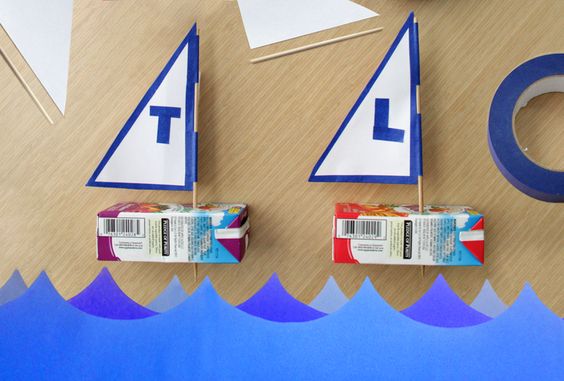
Juice boxes are versatile beyond their initial use. They can be creatively repurposed in the kitchen or as educational tools, often incorporating the use of filtered water for dilution or cleaning, and understanding the percentage of juice to water for recipes.
Fun Recipes and Projects
They can transform into fun recipes and craft projects. For instance, after enjoying the juice, one can create a homemade ice pack. Simply freeze the juice box at a desired percentage of juice to filtered water. This dilution ensures the pack remains partially soft when frozen, making it moldable around a bruised knee. Furthermore, empty juice boxes serve as molds for filtered water ice sticks for water bottles. Carefully cut the top off, fill with filtered water, and freeze.
| Project | Materials Needed | Steps |
|---|---|---|
| Ice Pack | Empty juice box, filtered water | Dilute remaining juice with water, freeze |
| Ice Sticks | Empty juice box, filtered water | Cut top, fill with water, freeze |
Educational Activities
Juice boxes also offer educational opportunities. They can be used to teach children about percentage and measurements. For example, fill a juice box to various levels with filtered water and mark the levels to show different percentages. This visual aids in comprehension of fractions and mathematical concepts. Additionally, constructing a toy boat from juice boxes encourages problem-solving and introduces basic engineering principles. Kids can create a flotation device, contemplating the balance and percentage of weight the box can sustain on filtered water.
| Activity | Learning Outcome | Materials |
|---|---|---|
| Measurement Learning | Understanding percentages and volume | Juice box, filtered water, marker |
| Boat Building | Basic engineering and problem-solving | Empty juice boxes, tape, scissors |

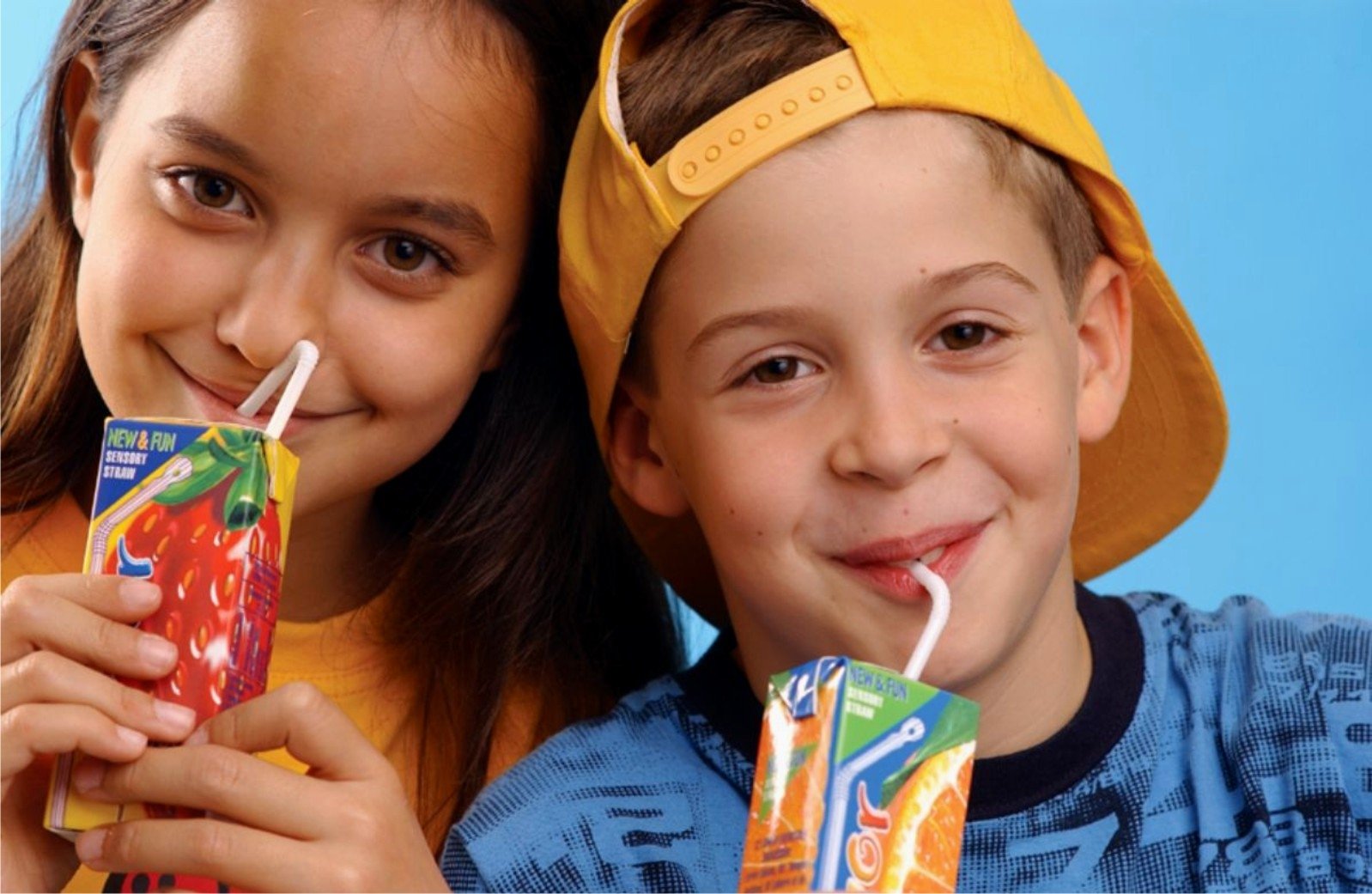





Leave a Reply
View Comments